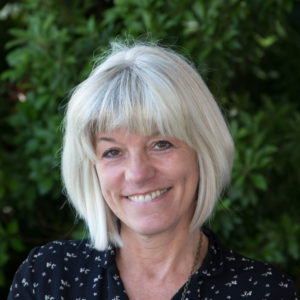“The arts matter because they help us to understand how we matter” — National Endowment for the Arts
I have loved finding ways to create things ever since I was a little girl. Through the years, I’ve taken many art lessons, music lessons, and explored many different mediums. Though I love to create art in a variety of ways, I’m not very accomplished at any one form. However, I still love to make it. So, why is it so important to me and to so many others? Why does it matter so much, especially right now?
Much has been written about the benefits of art, especially for children through programs like AHB’s Arts in Education.
“Decades of research have provided more than a sufficient amount of data to prove that arts education impacts everything from overall academic achievement to social and emotional development and so much more. . . the arts develop neural systems that produce a broad spectrum of benefits ranging from fine motor skills to creativity and improved emotional balance. Quite simply, the arts are invaluable to our proper functioning individually and as a society.” Renee Phillips, Americans for the Arts.
Other benefits of the arts:
“The arts are a critical component of healthcare. Expressive art is a tool to explore, develop and practice creativity as a means to wellness.”
Wellarts Association (as quoted by Compassionate Artists)
“Creativity in and of itself is important for remaining healthy, remaining connected to yourself and connected to the world,” says Christianne Strang, a professor of neuroscience at the University of Alabama Birmingham and the former president of the American Art Therapy Association.
This idea extends to any type of visual creative expression: drawing, painting, collaging, sculpting clay, writing poetry, cake decorating, knitting, scrapbooking — the sky’s the limit. “Anything that engages your creative mind — the ability to make connections between unrelated things and imagine new ways to communicate — is good for you,” says Girija Kaimal. She is a professor at Drexel University and a researcher in art therapy, leading art sessions with members of the military suffering from traumatic brain injury and caregivers of cancer patients.
So what is happening in our brains when we are creating or experiencing art?
Here’s one theory. Professor Kaimal believes that art’s ability to flex our imaginations may be one of the reasons why we’ve been making art since we were cave dwellers. One of her theories is that making art helps us navigate problems that might arise in the future, that our brain is a predictive machine. The brain uses “information to make predictions about what we might do next, and more importantly what we need to do next to survive and thrive,” says Kaimal. When you make art, you’re making a series of decisions : what kind of drawing utensil to use, what color, how to translate what you’re seeing onto the paper. And ultimately, interpreting the images, figuring out what your work means.
And something else. Though research in the art therapy field is relatively new, evidence is emerging to show that making art can lower stress and anxiety. In a 2016 paper in the Journal of the American Art Therapy Association, Kaimal and a group of researchers measured cortisol levels of 39 healthy adults. Cortisol is a hormone that helps the body respond to stress. They found that 45 minutes of creating art in a studio setting with an art therapist significantly lowered cortisol levels. Her research also showed no differences between people who identify as experienced artists and people who don’t. So that means that no matter your skill level, you’ll be able to feel all the good things that come with making art.
I expect that these are some of the reasons I love to create things. And why, whether you are creating art or experiencing someone else’s art, the affect art has on us proves exactly why it is so essential. Can you think of a time when we needed the arts more?
As we are struggling to understand what is going on in our world, art can give us hope. So learn to play an instrument, read a book, make a chalk drawing with children, listen to your favorite music or a new kind of music, take some photos of your world, or learn a new dance in your living room. Let art do what it does best. Connect us to each other, to our inner selves and to give us hope. “The arts matter because I learn something about people and places I would have never known otherwise. The arts make my brain and my heart stretch to make room for newness. Sometimes, parts of me are displaced and replaced by wiser stuff. And that’s a fine thing.” – Victoria Hutter.

ANNE SMART is the Executive Director at Arts & Humanities Bainbridge. She served on the AHB Board of Directors prior to becoming the ED. Her professional experience includes working in corporate training, process and organizational development, and intellectual property law.